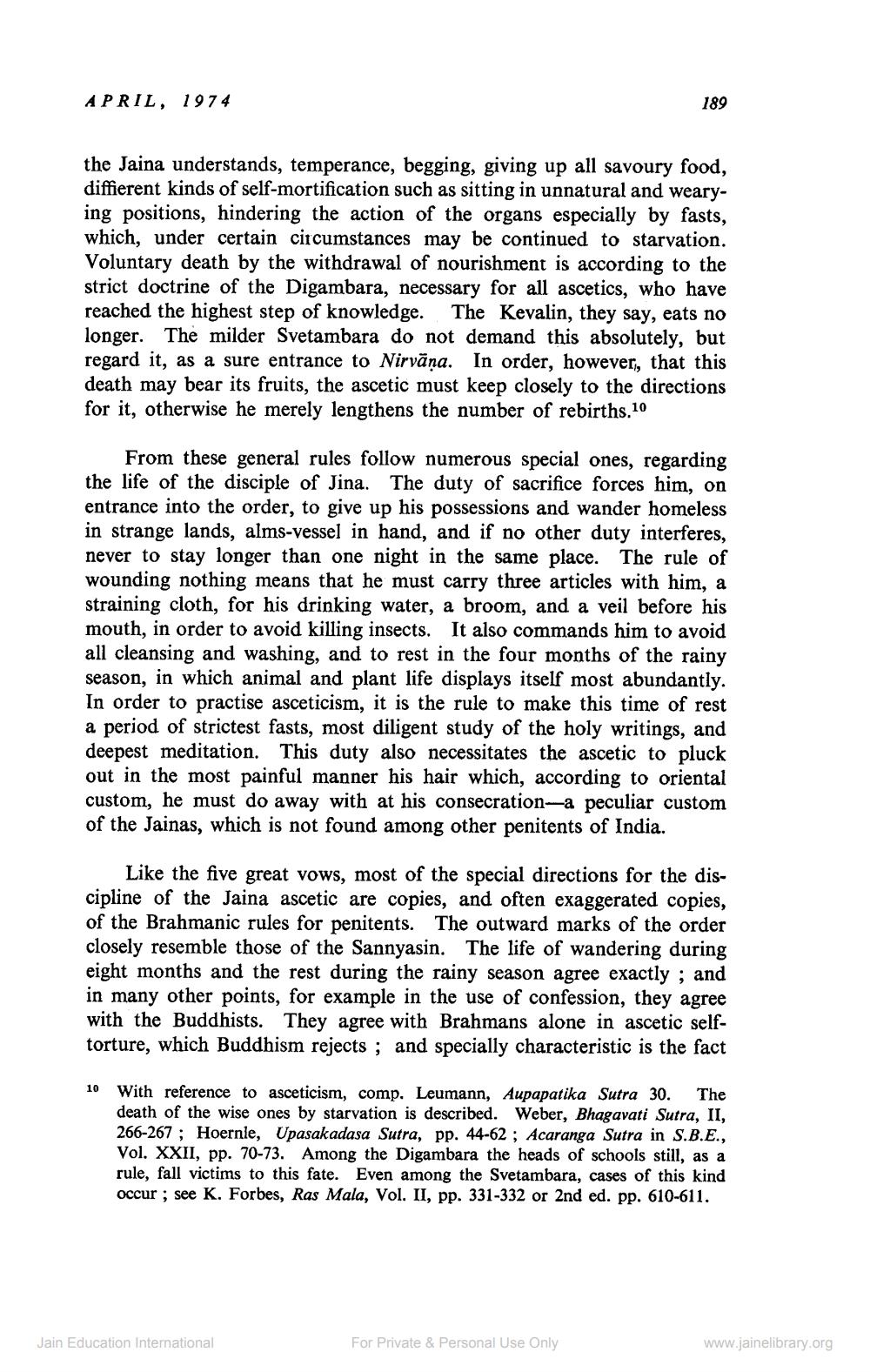________________
APRIL, 1974
189
the Jaina understands, temperance, begging, giving up all savoury food, diffierent kinds of self-mortification such as sitting in unnatural and wearying positions, hindering the action of the organs especially by fasts which, under certain circumstances may be continued to starvation. Voluntary death by the withdrawal of nourishment is according to the strict doctrine of the Digambara, necessary for all ascetics, who have reached the highest step of knowledge. The Kevalin, they say, eats no longer. The milder Svetambara do not demand this absolutely, but regard it, as a sure entrance to Nirvāna. In order, however, that this death may bear its fruits, the ascetic must keep closely to the directions for it, otherwise he merely lengthens the number of rebirths. 10
From these general rules follow numerous special ones, regarding the life of the disciple of Jina. The duty of sacrifice forces him, on entrance into the order, to give up his possessions and wander homeless in strange lands, alms-vessel in hand, and if no other duty interferes, never to stay longer than one night in the same place. The rule of wounding nothing means that he must carry three articles with him, a straining cloth, for his drinking water, a broom, and a veil before his mouth, in order to avoid killing insects. It also commands him to avoid all cleansing and washing, and to rest in the four months of the rainy season, in which animal and plant life displays itself most abundantly. In order to practise asceticism, it is the rule to make this time of rest a period of strictest fasts, most diligent study of the holy writings, and deepest meditation. This duty also necessitates the ascetic to pluck out in the most painful manner his hair which, according to oriental custom, he must do away with at his consecration—a peculiar custom of the Jainas, which is not found among other penitents of India.
Like the five great vows, most of the special directions for the discipline of the Jaina ascetic are copies, and often exaggerated copies, of the Brahmanic rules for penitents. The outward marks of the order closely resemble those of the Sannyasin. The life of wandering during eight months and the rest during the rainy season agree exactly ; and in many other points, for example in the use of confession, they agree with the Buddhists. They agree with Brahmans alone in ascetic selftorture, which Buddhism rejects; and specially characteristic is the fact
10 With reference to asceticism, comp. Leumann, Aupapatika Sutra 30. The
death of the wise ones by starvation is described. Weber, Bhagavati Sutra, II, 266-267; Hoernle, Upasakadasa Sutra, pp. 44-62; Acaranga Sutra in S.B.E., Vol. XXII, pp. 70-73. Among the Digambara the heads of schools still, as a rule, fall victims to this fate. Even among the Svetambara, cases of this kind occur ; see K. Forbes, Ras Mala, Vol. II, pp. 331-332 or 2nd ed. pp. 610-611.
Jain Education International
For Private & Personal Use Only
www.jainelibrary.org




